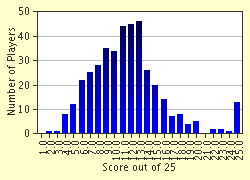Quiz Answer Key and Fun Facts
1. What does the word 'Balkan' refer to?
2. What is the highest peak in the Balkans?
3. What is the name of the central mountain range of the Balkan Peninsula?
4. What is the longest river in the Balkan Peninsula?
5. Which one is NOT a catabatic (descending) wind of the Balkans?
6. What does the term 'balkanize' mean?
7. The first successful rebellion of the Balkan peoples against the Ottoman occupation was in 1804. What was it called?
8. Nodding head left-right means YES, while nodding it up-down means NO in what Balkan country?
9. What are the most numerous people of the Balkans?
10. What is the major religion in the Balkans?
11. The northern border of the Balkan Peninsula lies on three rivers. Name them!
12. Which mountain massif is NOT in the Balkan Peninsula?
13. This landscape in the Western Balkans is characterized by its rugged surface, extensive underground drainage and caves. Which one is NOT one of its names?
14. This formidable cave system in Slovenia is one of the most beautiful in the world. What is it called?
15. Traditional folk dances in the Balkans are played in what formation?
16. This lake is the deepest in the Balkans (288 m), preserving more than 200 endemic species. What is it called?
17. One of the biggest bird reserves in Europe lies in a lake on the Balkans. Name the lake!
18. Which of the following winds does NOT blow in the seas surrounding Balkan Peninsula?
19. The weather in the Balkans is influenced mainly by three huge weather systems. Name the one that does NOT influence the Balkan weather directly!
20. What does the Serbocroat term 'vlah' NOT represent?
21. On this point in the Iron Gate, the Danube is only 150 m wide. What is the name of this gorge?
22. The first urban settlement in Europe, older than the cities of Mesopotamia and Egypt, was erected on the banks of Danube, near Belgrade. What is its name?
23. To what political philosophy did the Balkans give rise?
24. Strong resistance movements to Nazi occupation developed in many parts of the Balkans, which eventually led to self-liberation of most parts of the region. Which liberation movement was NOT in the Balkans?
25. This anthropological variety of the Caucasian race is described in the Western Balkans, in the background of the Adriatic coast. What is it called?
Source: Author
St Sava Jr.
This quiz was reviewed by FunTrivia editor
Leau before going online.
Any errors found in FunTrivia content are routinely corrected through our feedback system.

